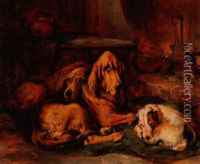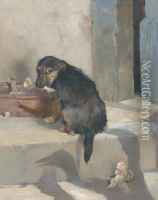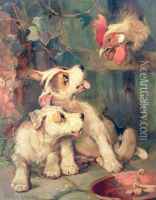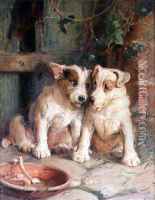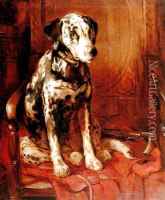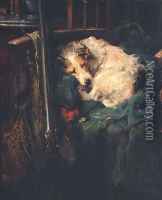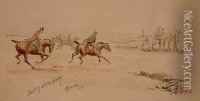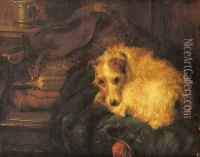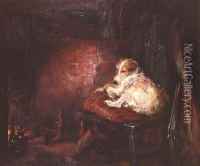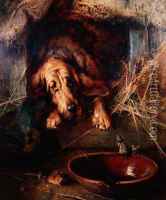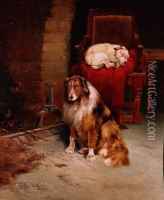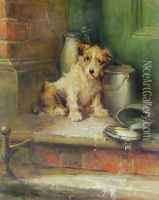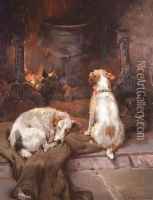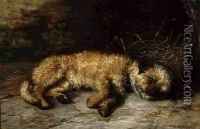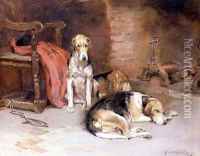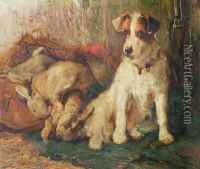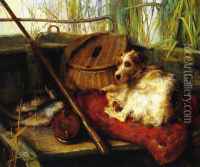Philip Eustace Stretton Paintings
Philip Eustace Stretton was an English painter who specialized in depictions of animals, particularly big cats such as lions and tigers. Born in 1865, Stretton developed an interest in the natural world at an early age, which would manifest in his later work as an artist. He was known for his ability to capture the movement and vitality of the animals he painted, a skill that garnered him considerable attention during his career.
Stretton received his artistic training at the South Kensington Art Schools, which were later known as the Royal College of Art. His education there allowed him to refine his technical abilities and develop a keen eye for detail. He exhibited his work at various institutions, including the Royal Academy in London, and was well-received by critics and the public alike.
Throughout his career, Stretton traveled extensively to observe animals in their natural habitats, journeys that took him to locations such as North Africa and India. These experiences provided him with the inspiration and knowledge to create his vivid and dynamic compositions. His paintings often featured dramatic interactions between animals, or between animals and their environments, highlighting the raw power and beauty of the natural world.
Tragically, Philip Eustace Stretton's life was cut short when he died in 1919, at the age of 54. Despite his relatively brief career, he left behind a legacy of stunning wildlife art that continues to be appreciated for its energy, realism, and the artist's obvious passion for the animal kingdom.
